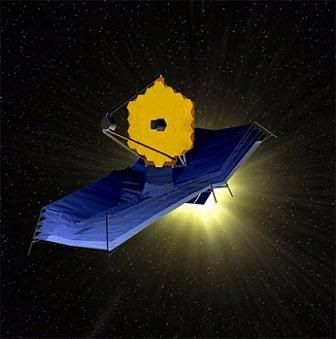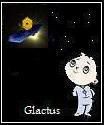Post by glactus on Jan 27, 2011 3:54:37 GMT
Astronomers have pushed the NASA/ESA Hubble Space Telescope to its limits by finding what is plausibly the most distant and ancient object in the Universe ever seen. Its light has travelled for 13.2 billion years to reach Hubble, which corresponds to a redshift around 10. The age of the Universe is 13.7 billion years.

UDFj-39546284
The dim object, called UDFj-39546284, is likely to be a compact galaxy of blue stars that existed 480 million years after the Big Bang, and would be more distant than the population of redshift 8 galaxies recently discovered in the Hubble Ultra Deep Field,

Hubble Space telescope
Astronomers don't know exactly when the first stars appeared in the Universe, but every step further from Earth takes them deeper into the early Universe's formative years when stars and galaxies were just beginning to emerge in the aftermath of the Big Bang.

The James Webb Space Telescope
The even more distant proto-galaxies that the team expects are out there will require the infrared vision of the NASA/ESA/CSA James Webb Space Telescope (JWST), which is the successor to Hubble. Planned for launch later this decade, JWST will provide the spectroscopic measurements that will confirm the report of the object's tremendous distance.
The James Webb Space telescope will go deeper into infrared wavelengths and will be at least an order of magnitude more sensitive than Hubble, allowing it to hunt more efficiently for primeval galaxies at even greater distances, at earlier times, closer to the Big Bang.
When this magnificent instrument is launched, calibrated and readied for infrared and visual observations, what an exciting time this will be.

James Webb
Credits: These are NASA/ESA images.
This is part text only. See full text and all scientists involved at Space Daily.com
www.spacedaily.com/reports/Hubble_Finds_A_New_Contender_For_Galaxy_Distance_Record_999.html

UDFj-39546284
The dim object, called UDFj-39546284, is likely to be a compact galaxy of blue stars that existed 480 million years after the Big Bang, and would be more distant than the population of redshift 8 galaxies recently discovered in the Hubble Ultra Deep Field,

Hubble Space telescope
Astronomers don't know exactly when the first stars appeared in the Universe, but every step further from Earth takes them deeper into the early Universe's formative years when stars and galaxies were just beginning to emerge in the aftermath of the Big Bang.

The James Webb Space Telescope
The even more distant proto-galaxies that the team expects are out there will require the infrared vision of the NASA/ESA/CSA James Webb Space Telescope (JWST), which is the successor to Hubble. Planned for launch later this decade, JWST will provide the spectroscopic measurements that will confirm the report of the object's tremendous distance.
The James Webb Space telescope will go deeper into infrared wavelengths and will be at least an order of magnitude more sensitive than Hubble, allowing it to hunt more efficiently for primeval galaxies at even greater distances, at earlier times, closer to the Big Bang.
When this magnificent instrument is launched, calibrated and readied for infrared and visual observations, what an exciting time this will be.

James Webb
Credits: These are NASA/ESA images.
This is part text only. See full text and all scientists involved at Space Daily.com
www.spacedaily.com/reports/Hubble_Finds_A_New_Contender_For_Galaxy_Distance_Record_999.html


